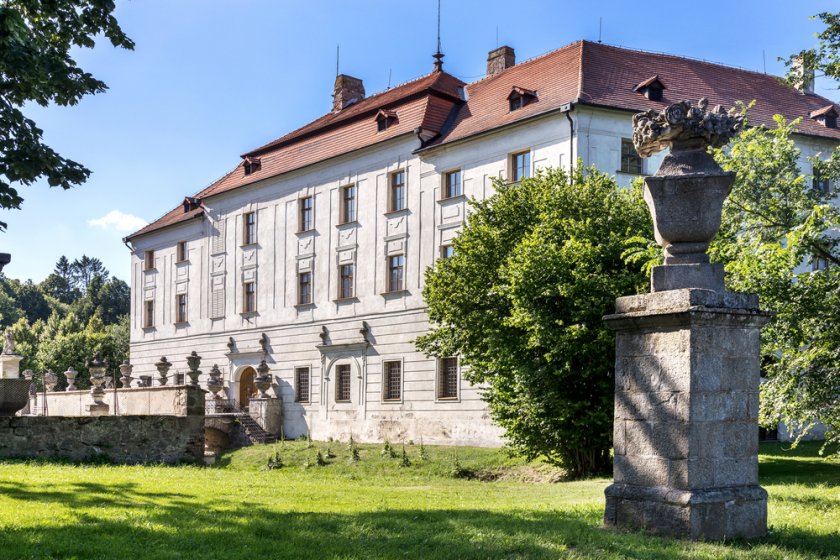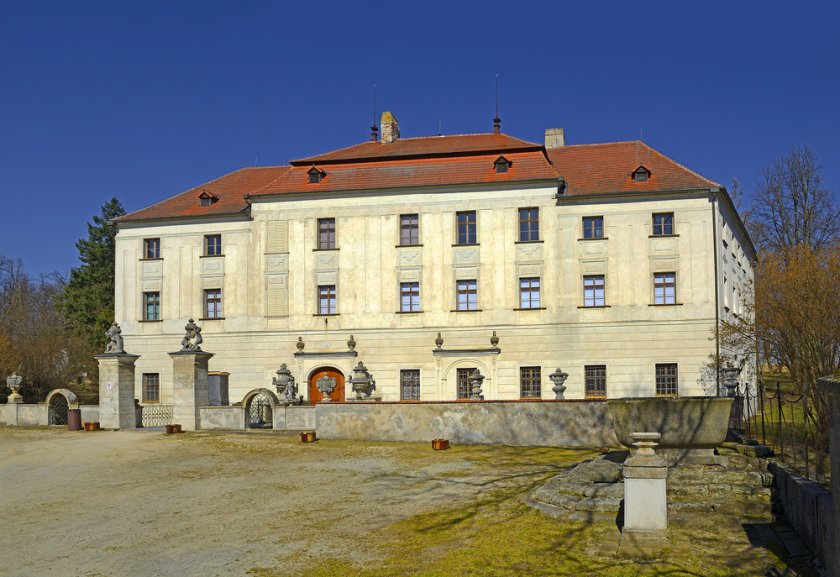Budišov (chateau)
In the Vysočina region, in the Třebíč district, there is a small village called Budišov and a Renaissance, Baroque chateau.
Information for visitors
Interesting facts Budišov (chateau)
From historical sources we learn about Budišov for the first time in connection with the year 1194. In the 13th century a water fortress was built on the site of the present castle by the lords of Lomnice, which was replaced by the castle in the 1970s. Dubé. The building had an enclosed floor plan and a rectangular courtyard with arcades.
The current, Baroque, appearance of the chateau is the work of the Counts of Paar, who carried out a magnificent Baroque reconstruction here in the 1920s.
At first glance, the Baroque-decorated stone bridge, also decorated with Classicist decor and vases, attracts attention. The building itself has an attic floor and it also includes outbuildings.
The interior of the chateau is decorated in many places with Chinese ornamental paintings, gilded fillings and complemented by stucco. Important Baroque artists took part in the decoration of the chateau chapel, including Petr Brandl and Vavřinec Václav Reiner. Here you will also find the theme of Neptune's courtship, the work of A.J.Prenner, depicting members of the Paar family. At the same time, a French park with four ponds and rich decoration was built around the chateau, of which unfortunately not much has been preserved to this day.
Modifications to the interior of the Budišov chateau also took place at the end of the 18th century. Until 1945, JUDr. Richard Baratta-Dragono, then the building functioned as a textile warehouse and apartments.
Since 1972, the Budišov chateau has been under the administration of the Moravian Museum, for which depositories of natural science departments have been established here, as well as botanical, zoological and anthropological collections.
Author: Andrea Štyndlová



